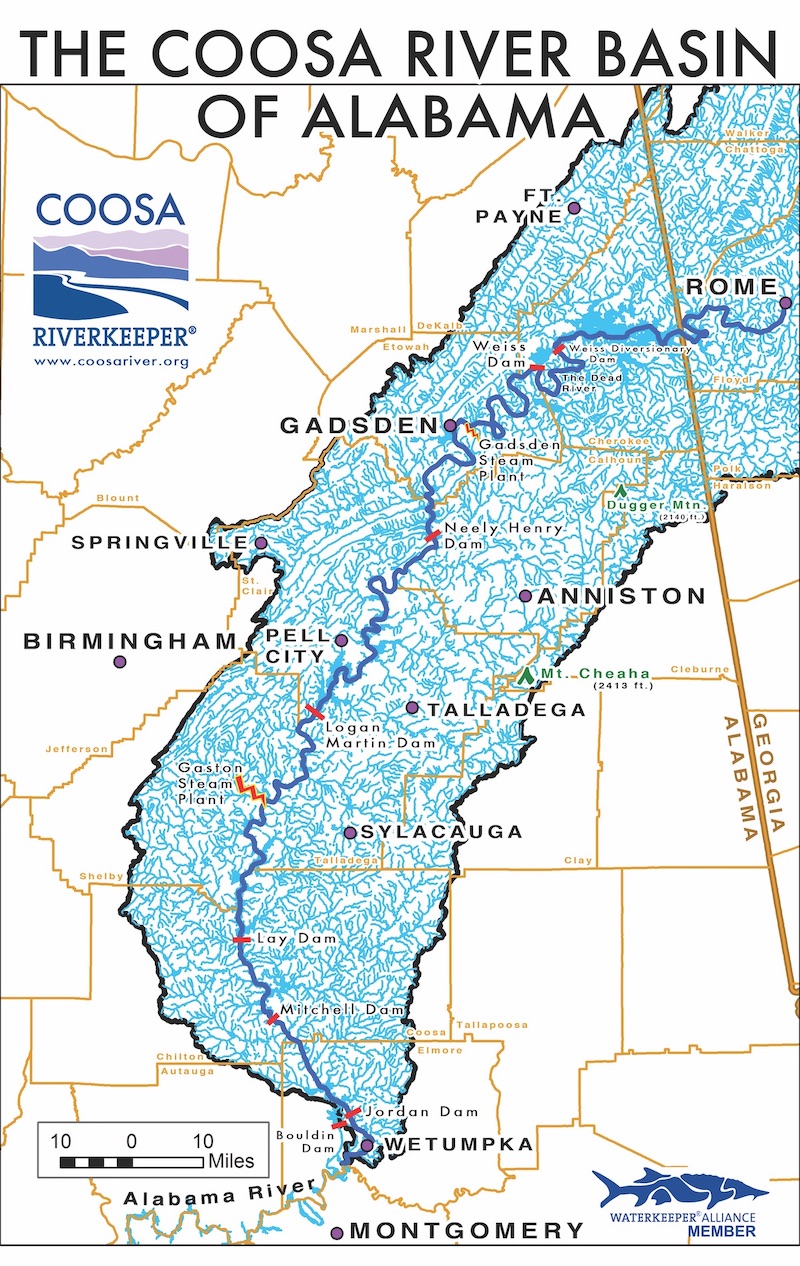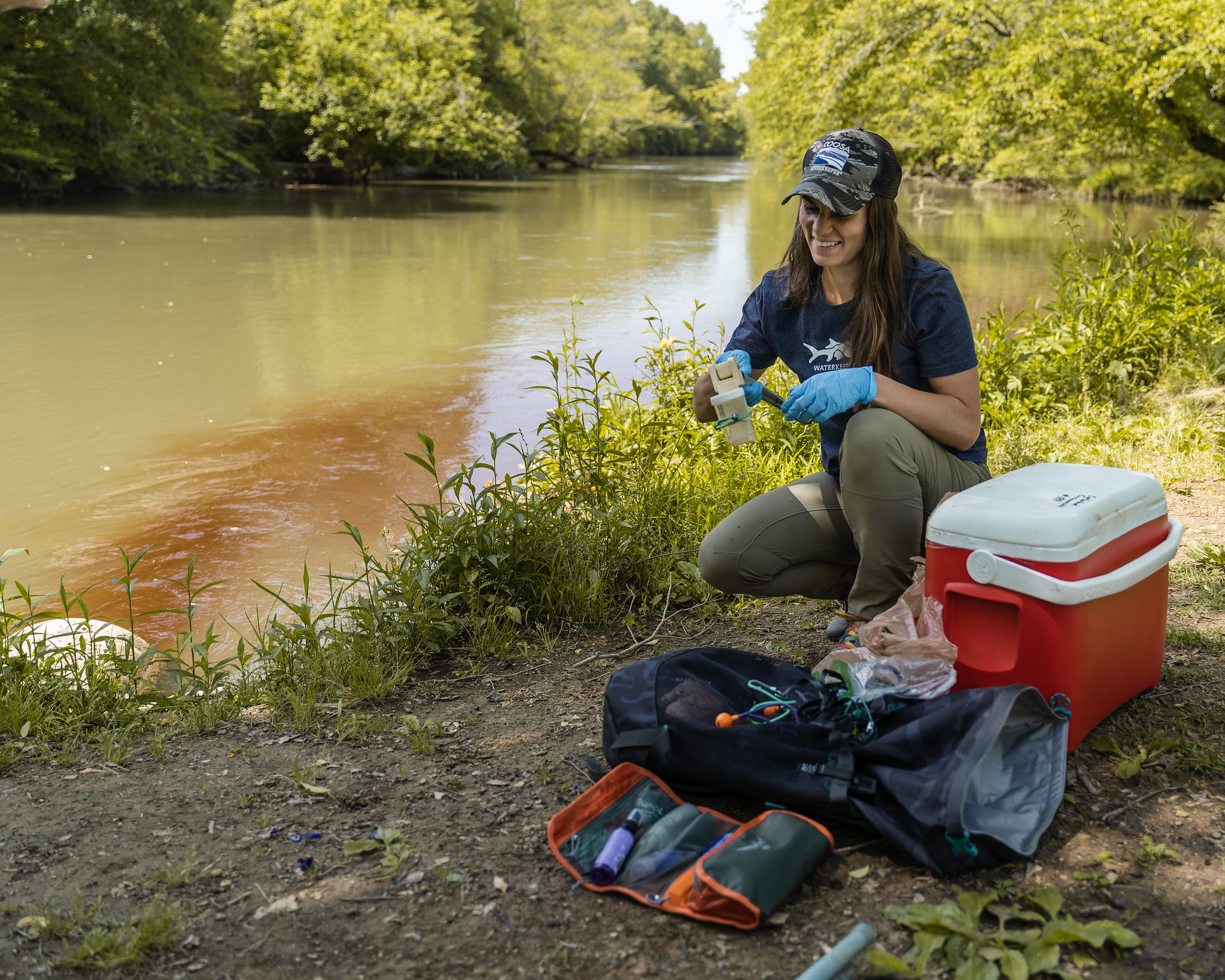The Coosa River
Learn about access points, waterside eats, boat ramps, fish consumption advisories, outfitters, and where we monitor water quality on the each of the lakes on the Coosa.
Weiss
Neely Henry
Logan Martin
Lay
Mitchell
Jordan
Square Miles
Miles of Shoreline
The Coosa Valley, rich in aquatic biodiversity and natural beauty, is one of the most developed rivers in Alabama – The River State.
From its headwaters in Georgia and Tennessee, the Coosa flows to Alabama where a series of impoundments cover the magnificent shoals that so famously dominated the Coosa in the steamboat era. Those impoundments created six large lakes, Weiss, Neely Henry, Logan Martin, Lay, Mitchell & Jordan, that are a major part of life on the Coosa and where tens of thousands of people live in lake homes, fish and swim.
Journeying down the river, from beautiful Lookout Mountain, past Talladega National Forest, and just past the “rumbling water” of Wetumpka, the river takes on a new name, the Alabama. From there, the Alabama River flows on to Mobile and the Gulf of Mexico.

Historical Significance
Make a Donation
Historical Significance
The Coosa Valley is steeped in history, having been ruled by both the Muscogee (Creek) and Cherokee while being claimed, alternately, by the Spanish, French (who considered the Coosa and Alabama Rivers the “key to the country”) and British. The United States then took up arms to defend the Native Americans claims to the Coosa, before eventually forcing them out to claim it as their own, making the natives walk the Trail of Tears before allowing them back onto reserves. The riverboat era and decades of King Cotton that followed were a way of life that inspired the creation of Popeye the Sailorman.
A River Has a Mouth, But No Voice
A River Has a Mouth, But No Voice


